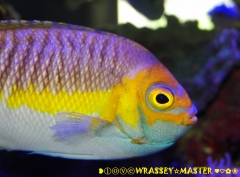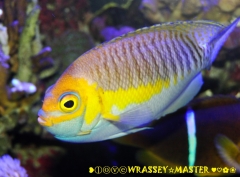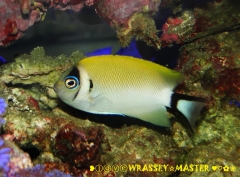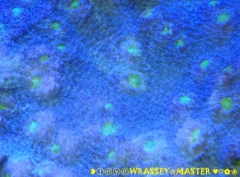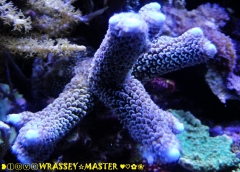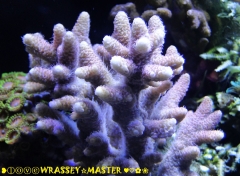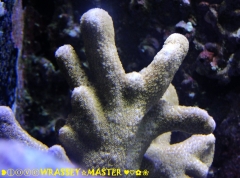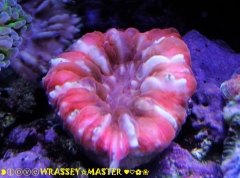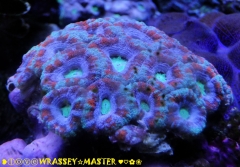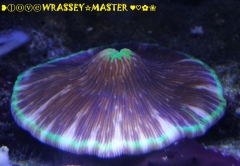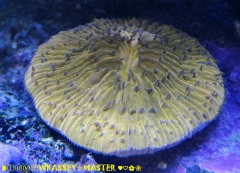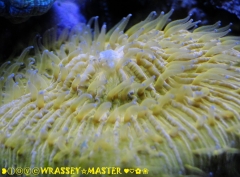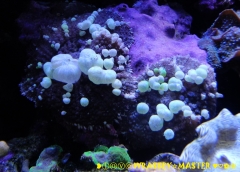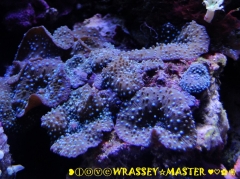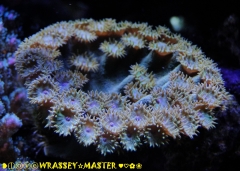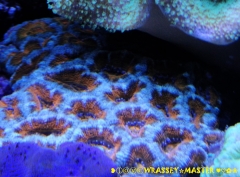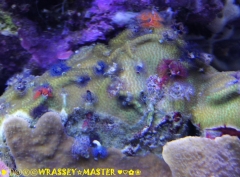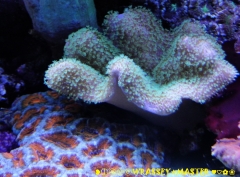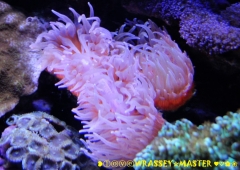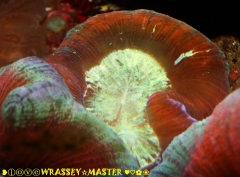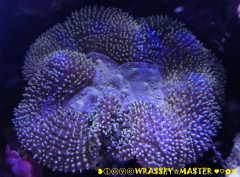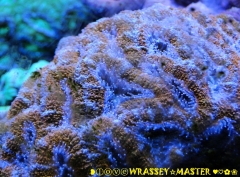-
Posts
4,897 -
Joined
-
Last visited
-
Days Won
7
Content Type
Profiles
Forums
Gallery
Everything posted by kueytoc
-

Genicanthus semifasciatus ( Male ) aka Japanese Swallow
kueytoc posted a gallery image in Members Gallery
From the album: WRASSEYMASTER® Reef Paradise
-

Genicanthus semifasciatus ( Male ) aka Japanese Swallow
kueytoc posted a gallery image in Members Gallery
From the album: WRASSEYMASTER® Reef Paradise
-

Genicanthus Semifasciatus ( Female ) aka Japanese Swallow
kueytoc posted a gallery image in Members Gallery
From the album: WRASSEYMASTER® Reef Paradise
-

OMG! Look at these hybrids and rare fishes!
kueytoc replied to Digiman's topic in FOWLR (Fish-only with Live-rock)
WoW !!!...outrageously cute. -

Ocean Flowerbed - The 31x31x36 (cm) nano tank
kueytoc replied to gingerwrasse's topic in Members Tank & Specs
For a moment I thought dat was a ''Flamboyant Cuttlefish''...what a good teaser -

Echinophyllia Coral Purple Chalice with Neon Green Eye
kueytoc posted a gallery image in Members Gallery
From the album: WRASSEYMASTER® Reef Paradise
The Enduring Allure of “Chalices”: What’s the Deal? Read more: http://reefbuilders.com/2010/04/03/enduring-allure-chalice-corals-echinophyllia-oxypor-deal/#ixzz2adZiIBaV Rainbow Chalice corals are now officially a thing Read more: http://reefbuilders.com/2013/01/31/rainbow-chalice-corals-arrived/#ixzz2adabHHA3 Mark Poletti shares some of his Reef Serenity, Chalice corals galore Read more: http://reefbuilders.com/2009/08/17/mark-poletti-shares-reef-serenity-chalice-corals-galore/#ixzz2adfykoFP -
From the album: WRASSEYMASTER® Reef Paradise
-
From the album: WRASSEYMASTER® Reef Paradise
Brilliant Rusty Pink Millepora creates a visual contrast of deep red coloration in the home aquarium. This beautiful wild coral species exhibits the branching or tabling growth of other Acropora, but with color intensity often unmatched in the home reef aquarium. Like other Acropora, this coral is fast growing when kept in ideal water conditions and strong water flow. The result is often a stunning, branched visual focal point. The Rusty Pink Millepora does best in areas of high light and strong, indirect or intermittent water current. Relatively peaceful, this Acropora does well in open areas of your system so it has ample room to grow. -
From the album: WRASSEYMASTER® Reef Paradise
The red montipora digitata is a unique monitopora. It's has bright red polyps with green branches. It's an easy coral to keep it requires high lighting with moderate to high flow. It's contrasting colors make it a very different type of montipora. It's colonies digitate or arborescent with upright branches. Place it in a middle part of the aquarium where it will get plenty of nutrients and trace elements. These montiporas should also be fed a variety of foods such as oyster feast, live baby brine shrimp, zooplankton and phyloplankton. -
From the album: WRASSEYMASTER® Reef Paradise
The Cynarina Button Coral is a large polyp stony (LPS) coral and often referred to as the Cat's Eye, Tooth, Doughnut, Teary Eye, or Meat Coral. Its genus name, Cynarina, is derived from the Greek word kinara (artichoke) and ina (similar to) and as the naming foreshadows, it really does resemble an artichoke. The Cynarina Button Coral is a round solitary coral, one of the largest single-polyped corals found in nature today, and available in many different color forms from pastel to bright and translucent, to drab variations. Sometimes, it is confused with its closest relative, Scolymia. While it is not an aggressive coral, it should be provided with adequate spacing between itself and other corals because it can expand to twice its size. It is easy to maintain in the reef aquarium and makes an excellent choice for both the beginner or advanced reef aquarist. It requires medium lighting combined with low water movement. It should be fed meaty foods such as micro-plankton or brine shrimp at night. -
From the album: WRASSEYMASTER® Reef Paradise
-
From the album: WRASSEYMASTER® Reef Paradise
-
From the album: WRASSEYMASTER® Reef Paradise
RB Personal Shopper: Attack of the killer Cycloseris Read more: http://reefbuilders.com/2011/04/27/cycloseris-disc-coral/#ixzz2adhkVChd Red Cycloseris shows up at Happy Coral Read more: http://reefbuilders.com/2012/04/16/red-cycloseris-happy-coral/ -
From the album: WRASSEYMASTER® Reef Paradise
-
From the album: WRASSEYMASTER® Reef Paradise
Orange Plate Corals are interesting shaped colonies that begin life as small attached polyps and grow a hard skeleton and settle on the substrate as they grow. Orange Plate Coral need to be placed on sand and not rockwork as rocks can damage the tender underside of the corals polyp. Orange Plate Corals need to be able to shift and move themselves on the sand and do so by inflating their polyp. Because of this it is imperative that their placement be on the sand. If placed on rockwork the underside of the corals polyp will be damaged by rubbing against the sharp edges of live rock causing stress and possibly death within a few short weeks. An interesting fact regarding Orange Plate Corals is that they are famous for a behavior called polyp bailout (producing offspring in the event of death). This can often happen three or four months after the coral dies and still sits in the aquarium as just a skeleton and is believed to be a last ditch effort at reproduction. Offspring will grow out of the skeleton from between the ‘flange’ like growths and eventually move to the sand bed. This coral can literally be fragged, or cut in half, to make two colonies. Diet Though these corals are mostly photosynthetic, they benefit from a small piece of raw table shrimp, frozen mysis shrimp or silverside once a week. After the lights turn out these corals will extend feeding tentacles and will quickly accept foods. -
From the album: WRASSEYMASTER® Reef Paradise
-
From the album: WRASSEYMASTER® Reef Paradise
-
From the album: WRASSEYMASTER® Reef Paradise
The Turbinaria Corals are large polyp stony (LPS) corals. Depending upon the species, they are referred to as a Cup, Pagoda, Turban, Vase, or Scroll Corals. The genus name, Turbinaria, is derived from the Greek word turbinatus (cone-shaped) because it usually grows in a conical or cup shape while living on the reef. It may also be found in the form of cups, ruffled ridges, plates, vases, or scrolls. It may grow horizontally or vertically. Although the Turbinaria Corals may be bright yellow, green, brown, gray, or cream, this particular specimen is green. A number of species may extend their polyps during the day or night while in an aquarium. Turbinaria sp. vary in the amount of care they require. Those that are highly convoluted or thin plates are the most difficult to care for. Others, like this one, make excellent candidates for the novice reef aquarist. It is a peaceful reef inhabitant and does not bother other corals that are placed in close proximity to it. However, it should still be provided with ample space away from other corals because it does grow quickly. It will require moderate lighting combined with moderate water movement within the aquarium. -
From the album: WRASSEYMASTER® Reef Paradise
-
From the album: WRASSEYMASTER® Reef Paradise
2-Year old Christmas Tree Worms & still growing...❤ღ。◕‿◕。ღ❤ ReefBuilders Article : http://reefbuilders.com/2013/07/02/xmas-tree-worm-rock-porites-corals-due-comeback/ The Christmas Tree Worm, or Jewel Stone, was first described by scientists in 1766. Its crown comes in a variety of different colors, but is always paired. Usually, just the crown, which is spiraled in the shape of a Christmas tree, is seen; its body is hidden within the host coral. It has an operculum (top trap door) that covers its tube when it withdraws its crown. There are often several Christmas Tree Worms in the same area, though they do not live in close groups. The Christmas Tree Worm is somewhat shy of movement and prefers to be in the shade of rocky overhangs, out of the bright light. It is very intolerant of copper-based medications. Breeding in the home aquarium is very rare. Since it is purely a filter feeder, the diet of the Christmas Tree Worm should be supplemented with liquid plankton-based foods. -
From the album: WRASSEYMASTER® Reef Paradise
-
From the album: WRASSEYMASTER® Reef Paradise
Scientific Name: Rhizotrochus typus Care Level: Intermediate Disposition: Semi-aggressive Placement in tank: Low Light Level: Non Photosynthetic Water Flow: Medium-Strong Intermittent Diet: Carnivore Range: Japan, Indo-Pacific, Australia The corals in the genus Rhizotrochus, or Rhizo for short are a deep water, non-photosynthetic variety. These corals are very similar in nature to those found in the genus Tubastrea, commonly called Sun Polyps. The biggest difference between the two is that Rhizotrochus are solitary in growth form, never forming colonies like a Sun Polyp. They reproduce by budding and some keepers of this coral have reported this happening in captivity. The Rhizotrochus will send out a root like structure from its skeletal base and attach itself to substrate like live rock. The do very well being tucked into a rock crevice or being placed in the sand. They come in various colors like red, pink, green, yellow and most, commonly, stark white. Diet This coral is non-photosynthetic and will require frequent feedings of meaty foods. Feed two or three times a week little bits of silverside, squid or shrimp. May be target fed brine or mysid shrimp using a turkey bastor or pipette. -
From the album: WRASSEYMASTER® Reef Paradise
Trachyphyllia geoffroyi and the ex-Wellsophyllia radiate by James W. Fatherree, MSc http://www.tfhmagazine.com/details/articles/trachyphyllia-geoffroyi-and-the-exwellsophyllia-radiata.htm -
From the album: WRASSEYMASTER® Reef Paradise
The Lobophyllia flabelliformis coral is a dome shaped, large polyp stony (LPS) coral with thick fleshy polyps. Lobophyllia coral is often referred to as a Lobed Cactus Coral, Lobed Coral, Colored Coral, Brain Coral, Open Brain Coral, Meat Coral, Modern Coral, or Large Flower Coral. Lobophyllia corals come in a variety of colors, some very bright. Their colored fleshy polyps hide its calcareous skeleton. It is found in a variety of textures; some are smooth, while others are bumpy and look like carpet. They are easy corals to care for making them great for beginners and experienced reef aquarists alike. Lobophyllia corals do well under almost any conditions; however, they will do best in moderate intermittent water flow, and moderate lighting conditions. For overall health, a high pH, alkalinity, and calcium level must be maintained. It's best to slowly acclimate the Lobophyllia coral to higher light intensities by starting the coral out low in the aquarium and moving it up over time. Lobophyllia corals are photosynthetic, but will do best if fed a few times a week with small bits of meaty marine foods or zooplankton when their tentacles are present. Lobophyllia corals can sting nearby neighbors with its sweeper tentacles; therefore allow ample room between them and other corals. -
From the album: WRASSEYMASTER® Reef Paradise
Acanthastrea generally have large corallites (8-15mm) with small teeth or lobes on their septa, as well as well-developed columellae. In the wild, they're found mostly in shallow water to about 20m, often in protected areas like lagoons, forming colonies up to several meters across. In the reef aquarium, Acanthastrea are incredibly hardy and fast growing, tolerating a wide variety of conditions, including both low and moderate lighting and moderate water currents. They make ideal candidates for fragging at home, since they have such distinct corallites (less risk of collateral damage!), amazing adaptability to lighting conditions, and rapid growth rates. Be aware that Acanthastrea are voracious nocturnal predators and competitively extrude mesenterial filaments and digest organisms within reach, so be careful with placement and distance between colonies.


